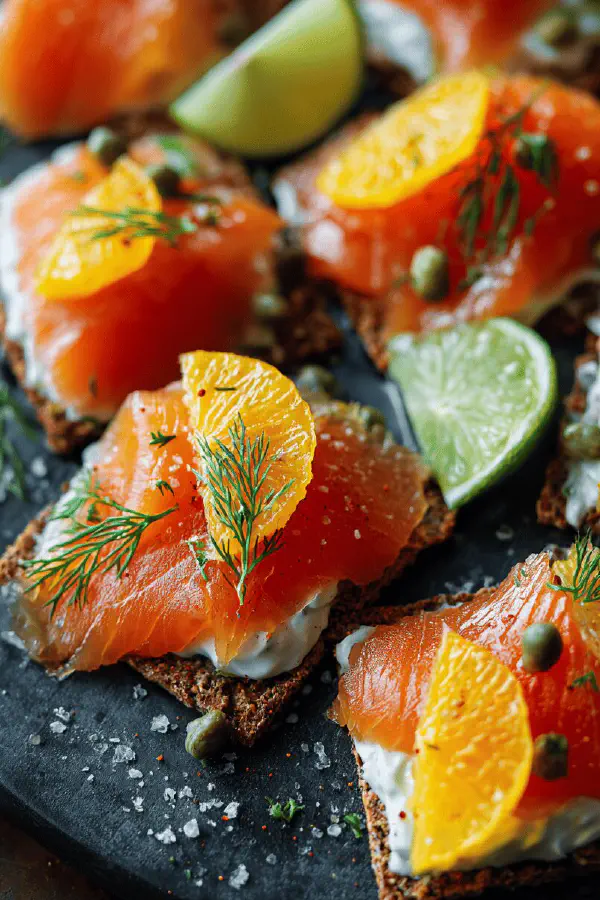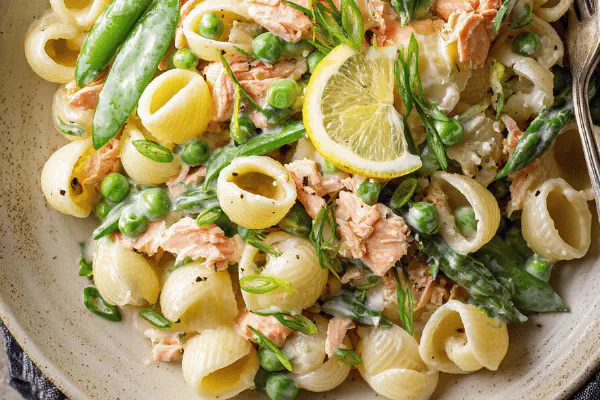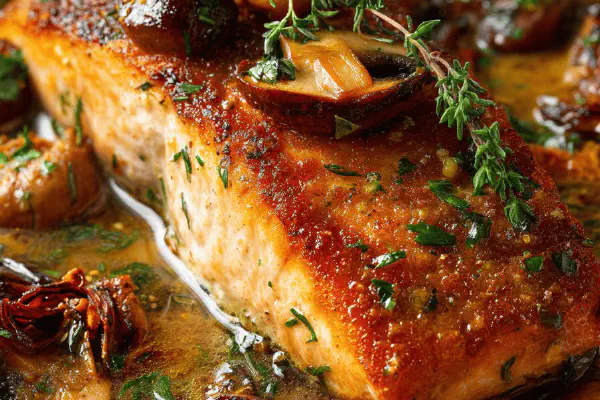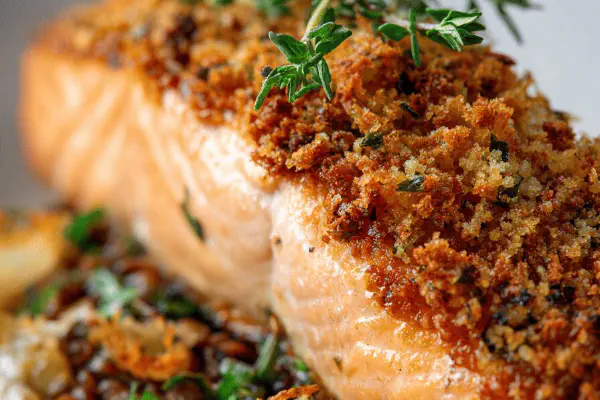Featured Recipe
Citrus Cured Salmon Twist

By Kate
"
Salmon cured in citrus and sea salt with a quick finish. Uses less salt and a hint of smoked paprika instead of sugar. Swaps lemon zest for lime zest. Adds fresh dill to the cure for herbaceous notes. Cured 20 hours for a gentler texture. Rinsed and thinly sliced, served with a dollop of Greek yogurt mixed with horseradish and chopped capers. Goes well on toasted rye crispbread or seaweed crackers.
"
Prep:
12 min
Cook:
0 min
Total:
Serves:
6 servings
salmon
citrus
appetizers
brunch
healthy recipes
Introduction
Cured salmon but different. Not the usual sugar-salt heavy mix. Smoked paprika instead, just a touch, for subtle warmth. Dill swapped in for plain. Lime replaces lemon, sharper, brighter. Cured less than a day, so it’s softer, easier to slice. The zest mix? Rainbow of citrus — grapefruit, orange, lime. That bitterness with the herbs? Fresh but slightly edgy. No heavy cream on the side; Greek yogurt thickened with horseradish sparks a little heat. Capers add the briny snap. All served on crunchy rye crackers or something seaweed-based. Good for when you want zing, not just sweet-salty fish. Brunch or a light first course
Ingredients
About the ingredients
The salt is cut down by a third to prevent overwhelming. Smoked paprika replaces some sugar for smoky depth rather than sweetness—keeps the cure savory. Fresh dill packs herbal punch, balances citrus aromas. Zesting uses lime, a sharper citrus, instead of lemon, adds brightness. Grapefruit zest remains half but adjusted slightly for balance. The horseradish in yogurt replaces heavier creams, offering spicy contrast. Cured 20 hours instead of 24 to keep texture tender but integrated. Choose skinless salmon for ease, use certified sashimi-grade if possible for safety. Freshly grated zest over dried or bottled to avoid bitterness or off-flavors. Seaweed crackers fit the oceanic theme or rye for earthiness.
Method
Technique Tips
Rubbing evenly is key, push cure into all sides. Covering the fish tightly prevents the drying out of the surface while curing. Longer curing makes the texture firm and dense; 20 hours keeps it delicate. Rinsing under cold water removes excess salt and sugar plus zest aroma oils that can dominate if left. Drying completely before slicing prevents sogginess. Thin slicing helps the fish absorb sauces or sides, makes each bite balanced. Horseradish stirred into thick Greek yogurt creates tang and slight heat, a contrast to the mellow fish. Capers scattered on top give bursts of briny sharpness. Serve cold or near room temperature for best flavor. Pair with crisp toasted rye or delicate seaweed crackers for texture contrast.
Chef's Notes
- 💡 Mix salt and smoked paprika well. Many forget this. Spread that cure evenly on all sides of the salmon. Push it into the flesh. Don't skim over. That's where flavor builds. Fresh dill and zests next. Layer them generously. Don't rush this part. It matters. Cover tightly. No air gaps. Air dries out the fish. 20 hours needed for best results.
- 💡 Rinsing is key. Do this under cold water. It's not just for looks. Remove excess cure. Don't let the zest overpower. Pat dry well. Sogginess isn't your friend. Then slice ultra-thin. Sharp knives help. A dull edge tears the fish. This makes a difference. Each slice should absorb all your toppings. Or they’ll just slide off. Eat cold for max impact.
- 💡 For yogurt mix, take Greek yogurt. Stir in horseradish. Not too much. Adjust to your taste. A little heat contrasts with salmon. Capers are essential. They add briny bits. Don't just sprinkle. Spread them around on each slice. Serve on crispy rye or seaweed crackers. They hold up well. Texture matters here. Crunch against tenderness. That's the goal.
- 💡 Curing time matters. 20 hours instead of 24 keeps it tender. You want a soft texture. Longer cures will firm things up. But that affects flavor too. Adjust your seasoning. Have fun with zests. This is where creativity shines. Grapefruit, orange, lime—don’t hold back. Use fresh only, avoid dried. Fresh gives bright kick, dried can impart bitterness. Transition key flavors without losing balance.
- 💡 Always consider safety with fish. Use skinless, sashimi-grade salmon. Look for trustworthy sources. Freshness impacts taste and safety. If unsure, ask about sourcing. Prepare in a non-reactive dish. Avoid metals that can taint flavors. Plastic or glass is your best bet. Keep an eye on it while curing. Flip the salmon halfway through for even curing. Care = flavor.
Kitchen Wisdom
How do I adjust for more tang?
Use more lime zest. Or add extra horseradish. Both bring acidity. Zesty balance enhances flavor profile. But don't overdo it. Simple changes yield big effects.
What's the best way to serve leftovers?
Keep them cold. Wrap tightly in plastic. Store in the fridge. Lasts a few days but taste best fresh. Or, use them in salads for a twist. Complements greens nicely.
If I can't find capers, what to use?
Olives could work. Not the same but they add briny notes. Maybe pickles for crunch. Both offer salty contrast. Adjust amounts to taste. Give them a try, balance flavors.
Can I use other fish?
Yes, other fatty fish works. Think tuna or mackerel. They'll need specific time adjustments. Curing times vary by fish type. Check discussions online for best practices.



